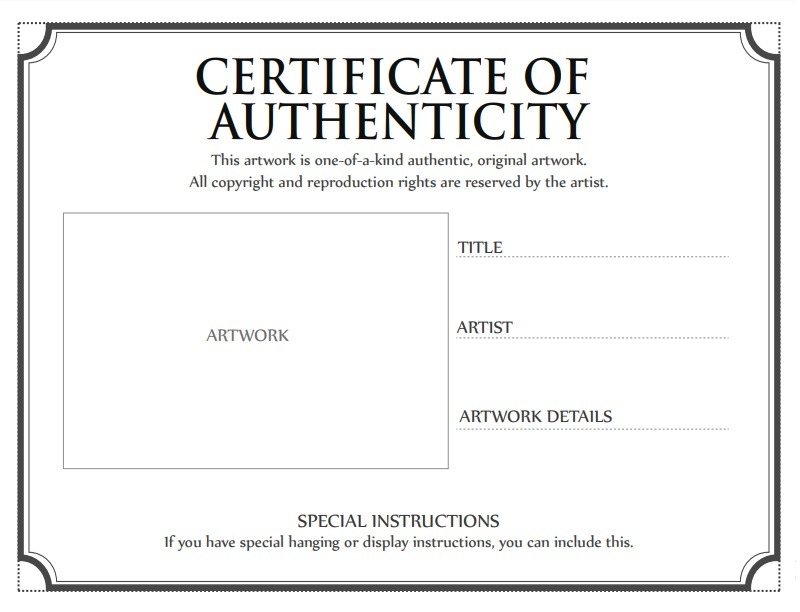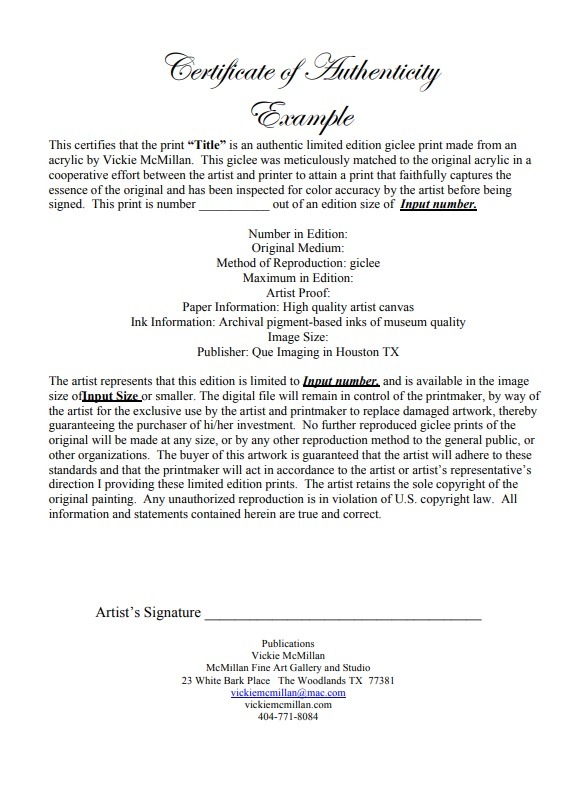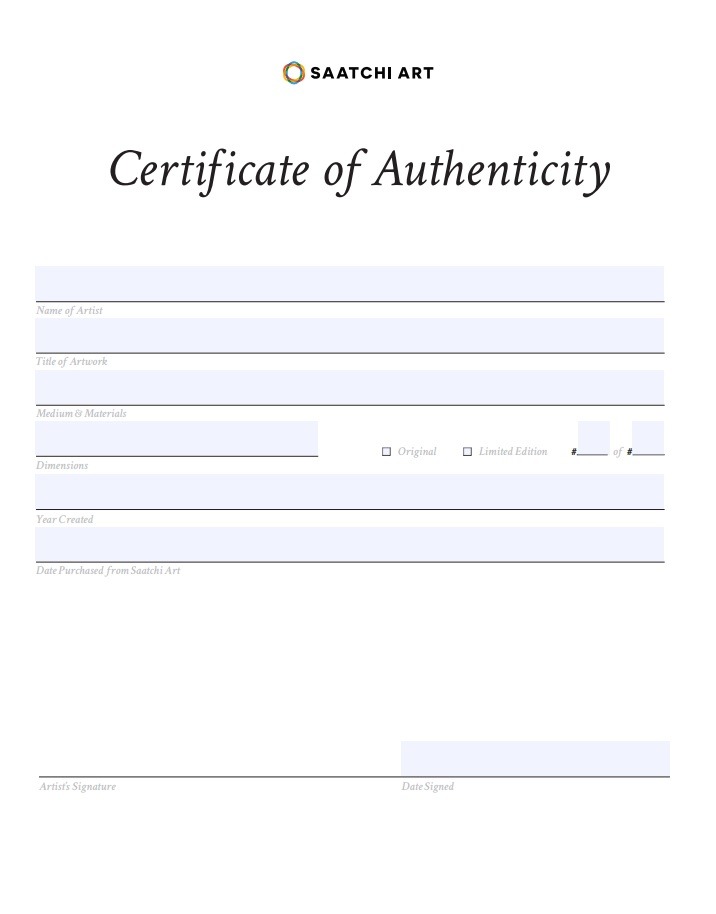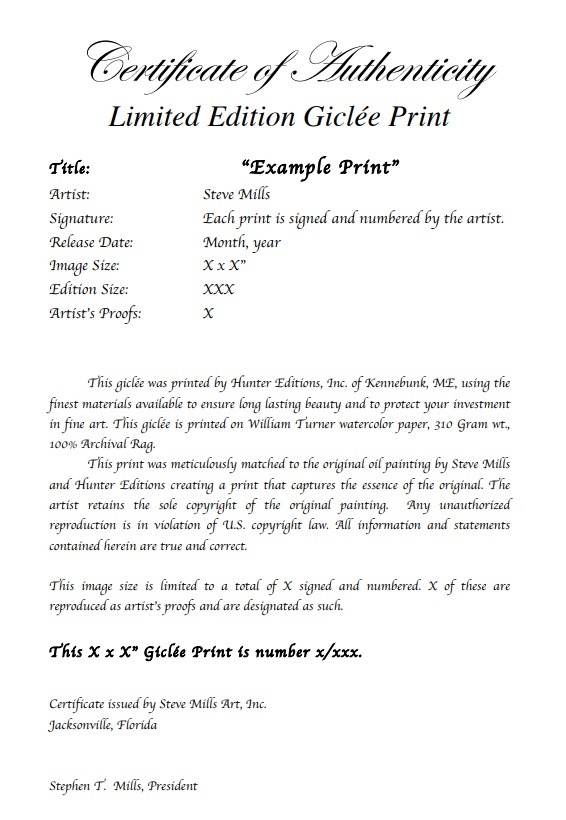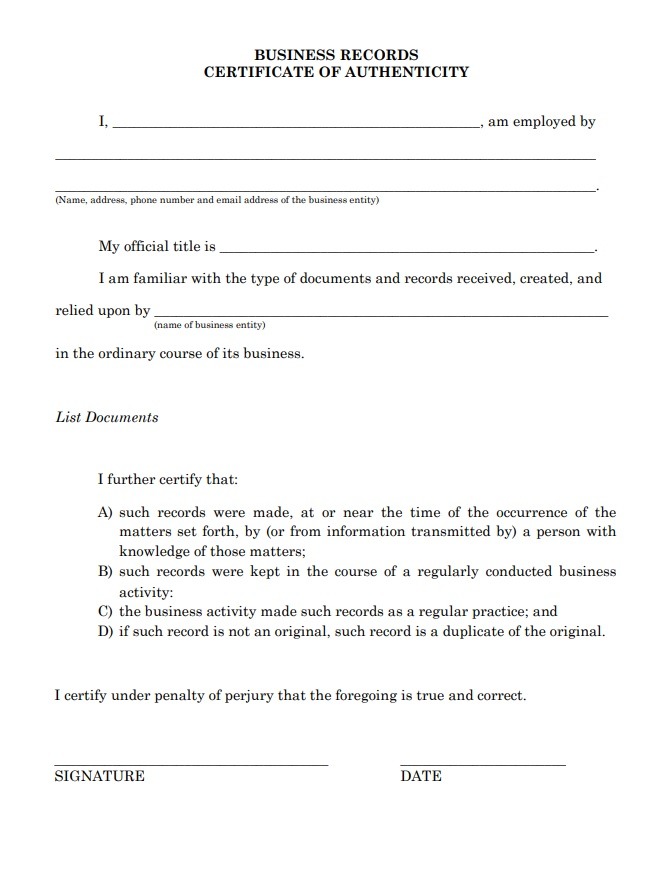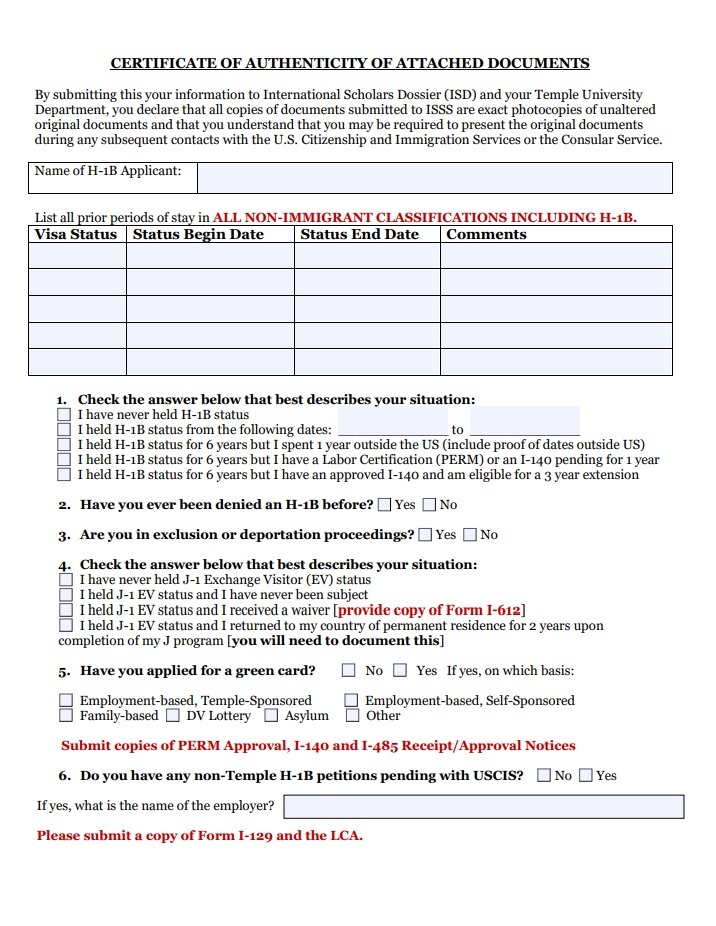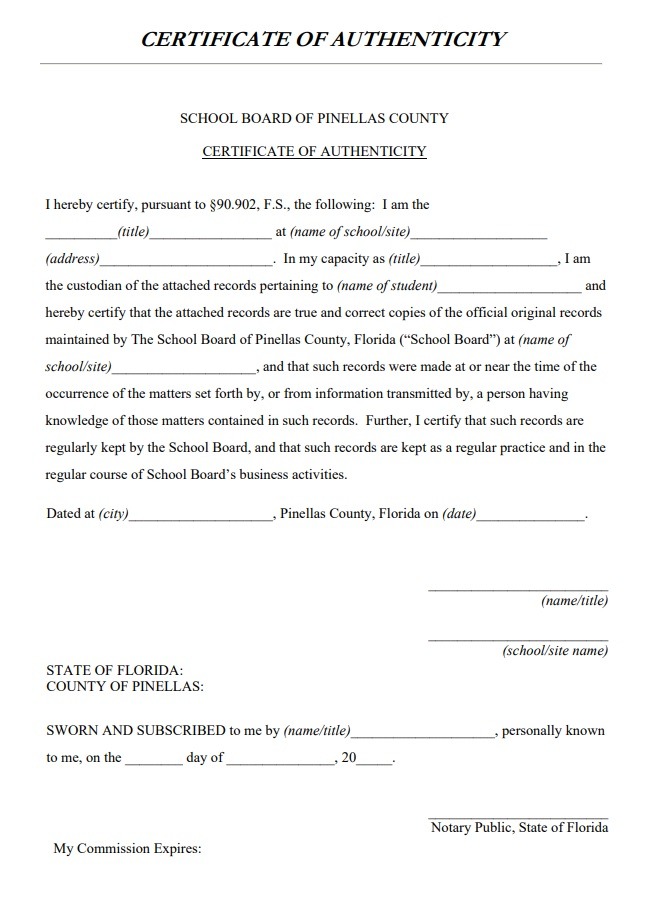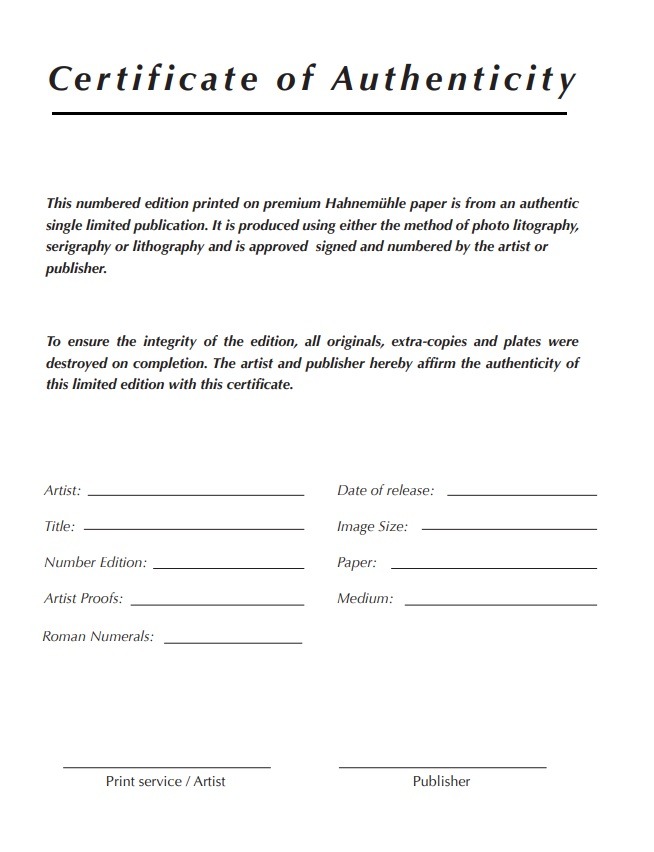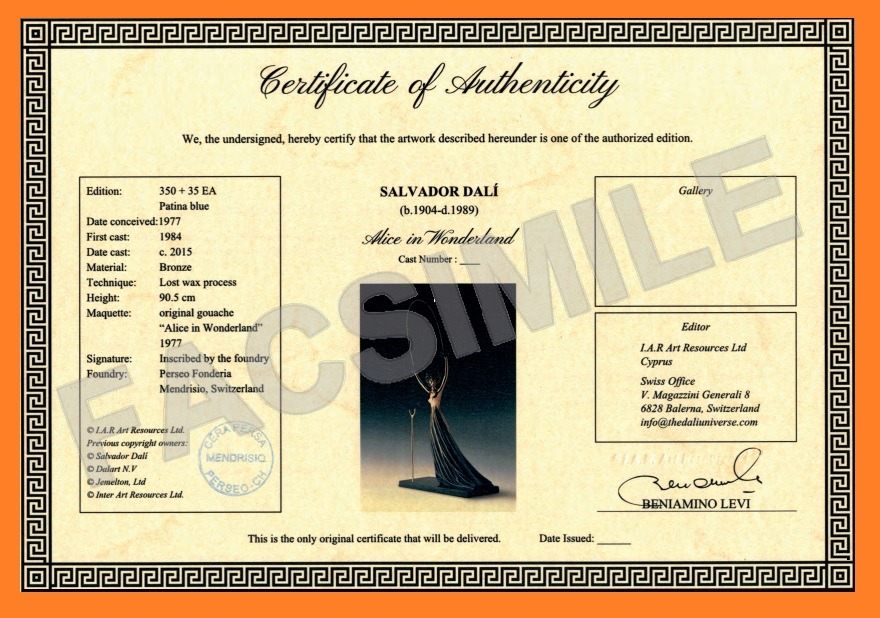Certificate of authenticity templates are used to confirm the originality of any artwork, software or products. Many antique works and products are accompanied by an authenticity certificate which confirms their originality. Basically, it is more likely a seal which acts as a guarantee offered by the seller to the buyer that the product, artwork or software is original. Being a valid certificate, it requires further information to be part of the certificate of authenticity, such as; date and year of production, creator or maker name with sign, name of all those organizations who have confirmed its originality, actual title frame, details of references and details about the artist or creator. To be considered a valid certificate, it must state the full contact information of the entity that authored this certificate.
Importance of Certificate of Authenticity:
A seller is required to present the proof of originality of his artwork, software or product before the buyer. Generally, this document confirms the content and product and further helps the buyer to confirm the references. If you wish to buy an artwork, you will need to be careful because there are cases of forgeries regarding artwork. To make sure you are buying an original product, you should ask for its certificate of authenticity. Now, as per the Fraud Act 2006, Section 7, it is mandatory to provide details and exact contact details of the issuer along with the certificate. A part of legal obligations, this certificate confirms not only originality but also protects its reproduction or redistribution. Now, the world has become a global village and many online websites are conducting live auctions. They also used this certificate as proof that their presented content or artwork is original. They also mention their reference number, which anybody can verify before buying.
Content of Certificate of Authenticity:
There are set parameters for any certificate to be considered as valid and these parameters are called the content of the certificate. Without this valid content, a certificate cannot be considered as true and original. The standard content of this certificate is given below:
1- Title of Product, Artwork or Software in heading area.
2- Extra Details: year of production, creator name and organizations involved in reproduction.
3- Print Number with total number of prints so far.
4- Collection Name and Source.
5- References and their details.
6- Image title and details, if any.
7- Name and Designation of Certificate creator with current accurate contact number.
8- Details of size and printing.
9- Statement of Authenticity in two or three lines.
10- Signature and Stamp.
Why Do You Need a Certificate of Authenticity?
Artworks and antique products come with huge prices and therefore, as part of common business practices, they must include a certificate of authenticity to prove they are original. Especially the antique products, which are hard to acquire and have precious demand, but they belong to originality which can only be confirmed by certificate of authenticity. Moreover, this certificate verifies that the artist and the copyrights of the artwork which he or she has made and if anyone tries to reproduce it or copy it, can be punished severely. Moreover, the certificate of authenticity is mandatory because it establishes a trust factor which is very critical for new buyers.
